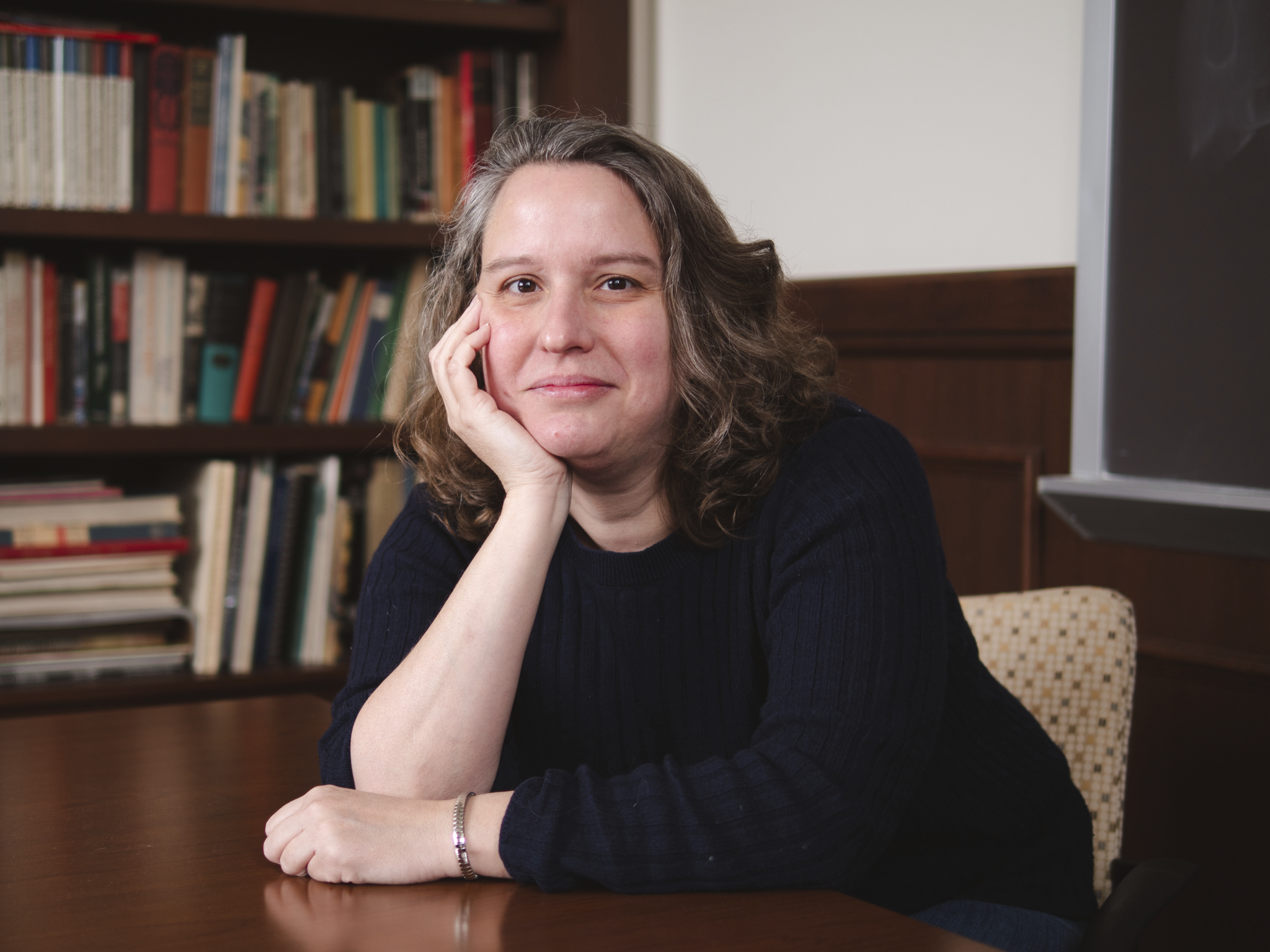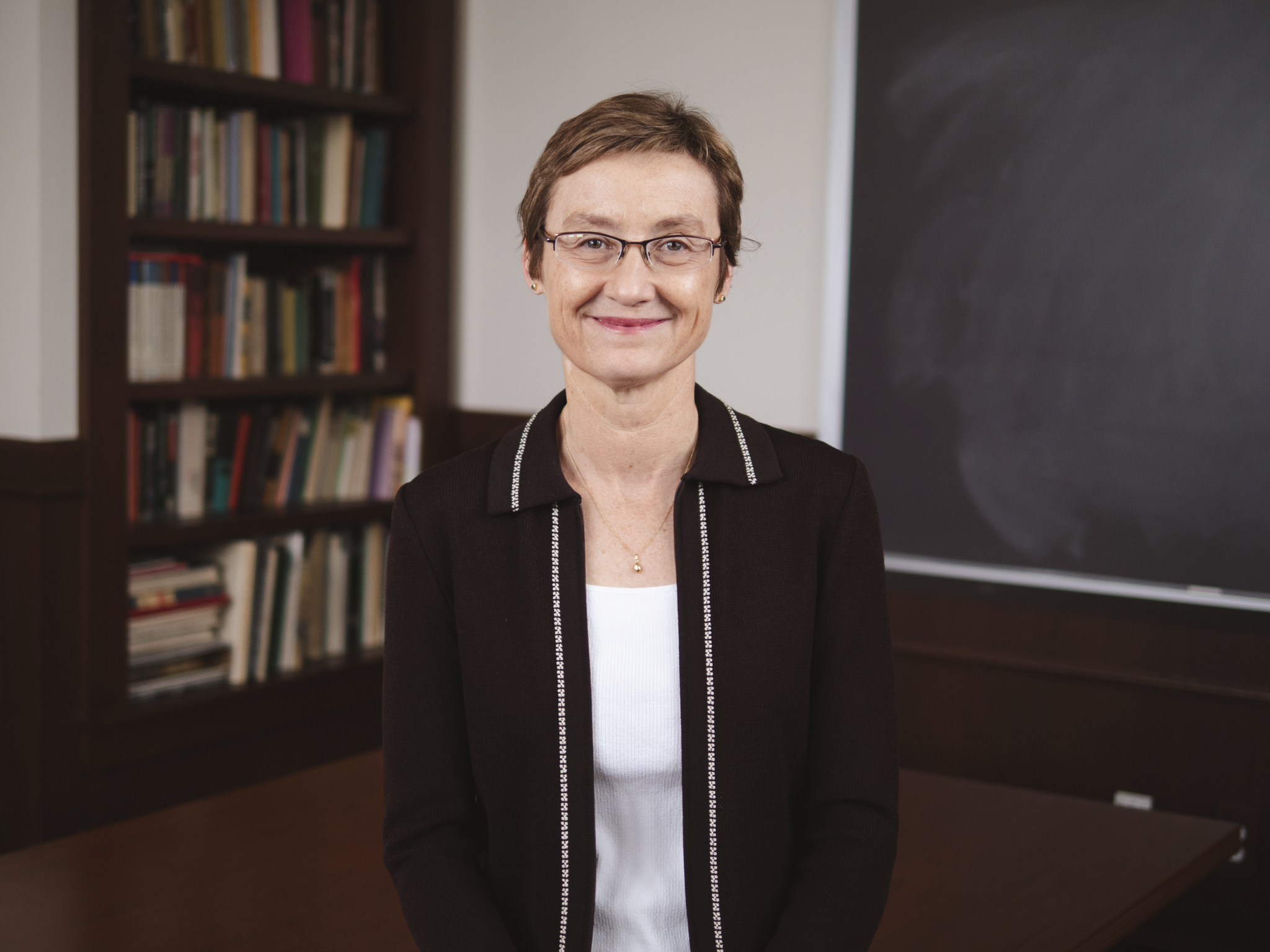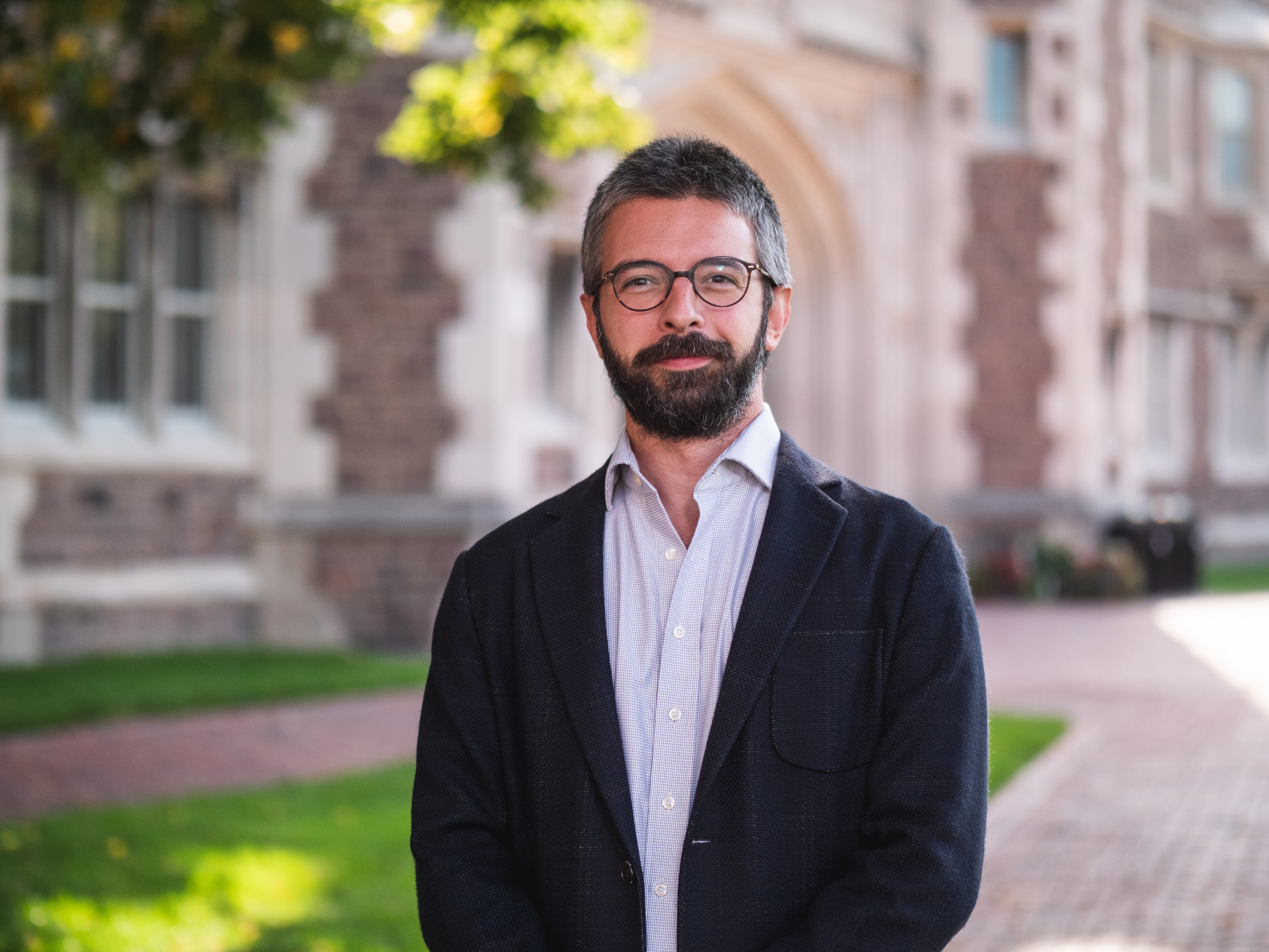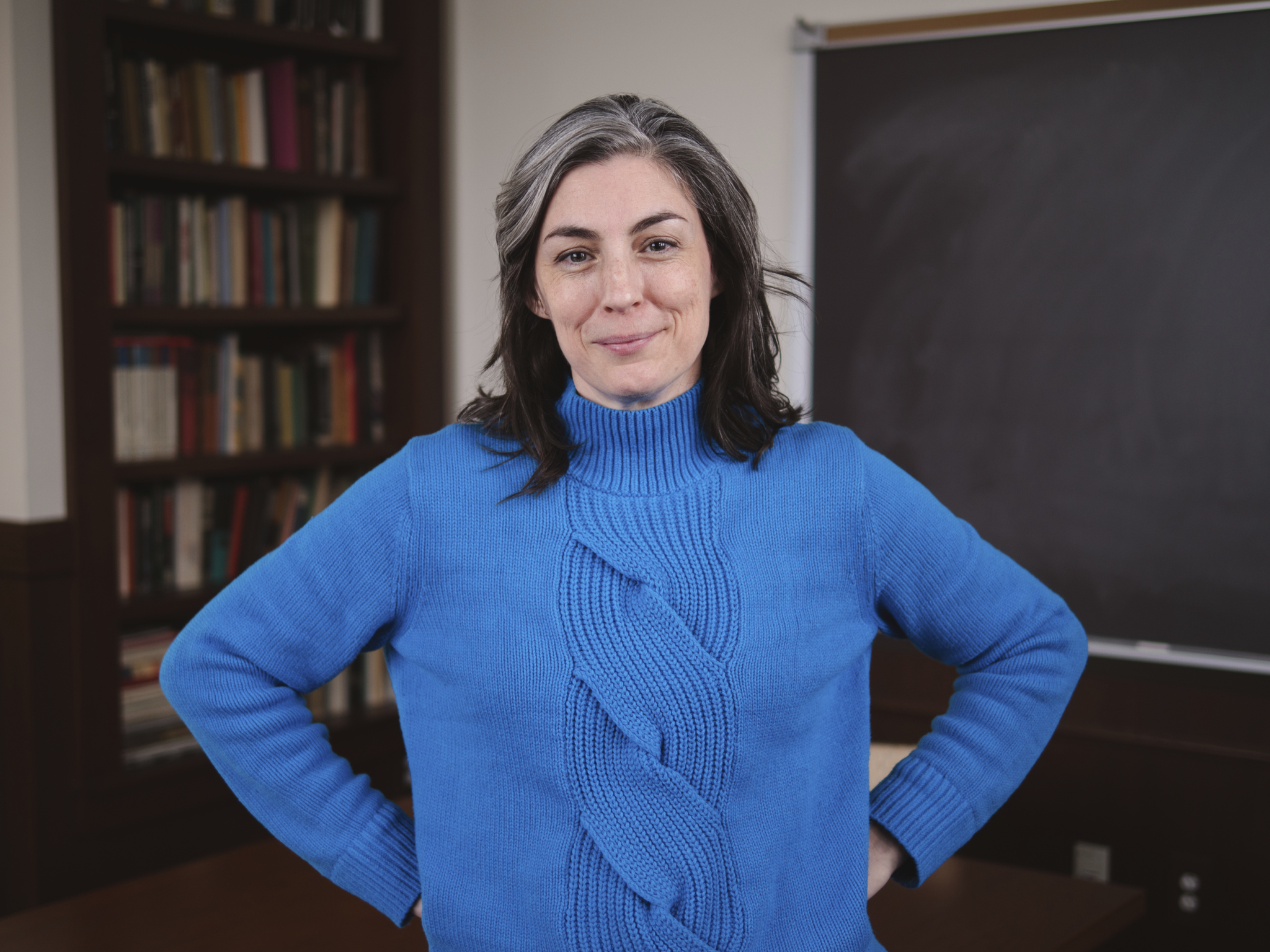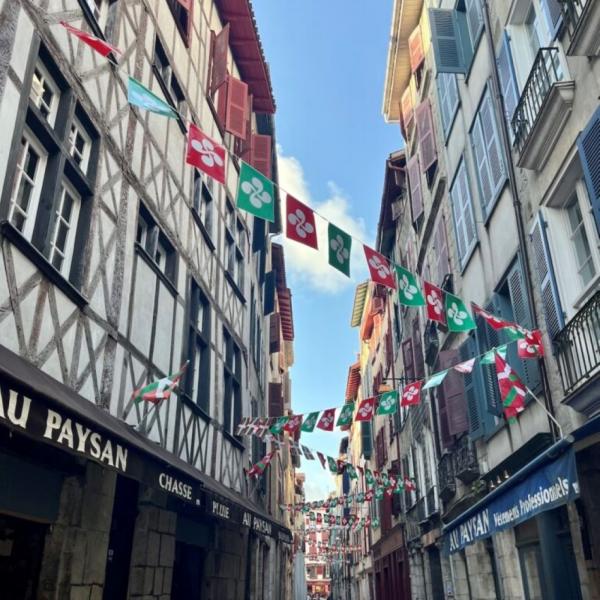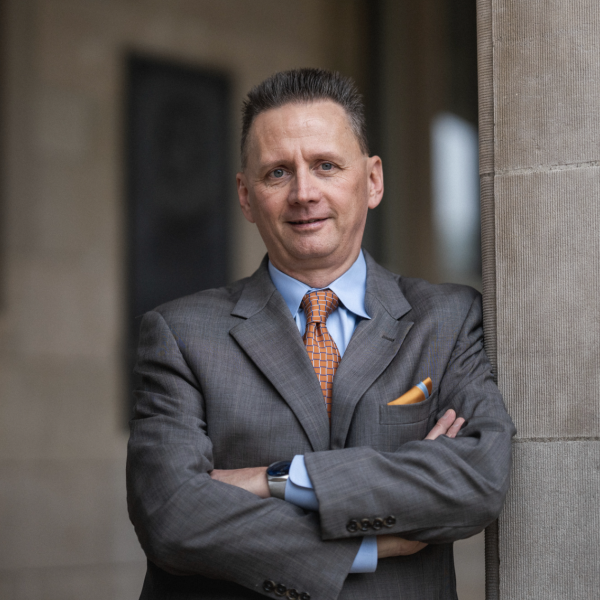In 2020, our history classrooms have looked very different. Below, four faculty from the department describe how their teaching has changed because of COVID.
Christine Johnson
Associate Professor and Director of Undergraduate Studies
In my writing-intensive course on “Mapping the Early Modern World,” my classroom consists of my two screens and a laptop in my home office, where I meet my students once a week for class discussions via Zoom and where I read and comment on their writing exercises, drafts, and rewritten assignments using Canvas's many colorful editing and annotation tools.
In my co-taught Interdisciplinary Project in the Humanities seminar on Resistance in the Renaissance, my classroom is a physical classroom, thinly populated by mask-wearing students and two mask-wearing instructors, while the other students appear via Zoom on the screen at the front of the classroom. Classroom discussion also occurs via the Zoom chat, where at least one instructor keeps up a running summary/commentary and students can make contributions and ask questions, and through ongoing Canvas discussion boards.
I was not surprised at all by the ability and willingness of my students to make this challenging situation work. Their committment was essential, but I had a strong sense that WashU students would be up for the challenge. I have been surprised by how much the changes I’d been making to my teaching in the past few years have prepared me for the switch to remote and hybrid learning. Inspired by colleagues at WashU and history faculty members at other universities, I had been devising more flexible and more interactive assignments and different ways to structure class discussion. The switch to remote learning certainly accelerated these changes, but the process of rethinking how I teach was already underway.
Lori Watt
Associate Professor
The pandemic has brought untold misery to people throughout the country, especially to those who could least afford it. I think it is important to acknowledge that at the outset.
But teaching under the circumstances of the pandemic has created the opportunity, or rather the imperative, to learn a great deal. My students and I are practicing new skills that will place us in a strong position for the post-pandemic world, in which remote communication will be a central component. We have all become quite nimble — things we worried about in March, like cameras, microphones, muting, have become second nature. Gaffes are politely overlooked because we all make them.
I am keenly aware that not all students have equal access to internet resources or safe and quiet spaces from which to attend class. But, if students can find a steady wifi signal and a reasonably private spot, then our synchronous Zoom sessions provide a more-or-less egalitarian experience. Everyone’s face on the screen is the same size and we are all facing the same direction. Of course, not everyone is paying the same amount of attention all the time (faculty and staff sometimes drift in and out of Zoom meetings as well), but we all have the same presence on the screen. I instituted a system of organized discussion leaders in class in which individuals or teams of students agree in advance to lead discussion, and then the students and I plan how that discussion might unfold. When their turn comes, I turn the session over to them and turn off my microphone. This has been one of the best techniques so far in synchronous Zoom sessions. I have found that students are eager to discuss meaningful questions with their classmates in breakout rooms. I write up those questions in advance, include them in the homework, and then post them in the chat. The students then report on their findings. Polls work well for bringing everyone together around a single question and then spinning discussion off of it.
I cannot presume to know how my students are feeling these days about their college experience. Judging from their performance, and a few lengthy one-on-one conversations, it seems that they are resolved to make the best of a challenging situation and learn as much as they can. In fact, I’d say that the students in my courses this semester are even more focused and purposeful than usual. As my colleague Douglas Flowe pointed out in a Summer 2020 CNN interview, the pandemic means that we are experiencing simultaneity — that is, we are all living in the same moment together. Black Lives Matter, COVID, and the election, all happening simultaneously in the context of the looming climate crisis, have brought us together quite powerfully. In my courses, this has meant we spend more time considering how the topics we study are relevant to our circumstances today. As I’m sure my students would attest, we still engage the past, but we apply a heightened awareness of our constrained present and also, at times, look towards the possibilities of the future.
Ulug Kuzuoglu
Assistant Professor
The classroom looks unlike any other classrooms I’ve been in before. It feels futuristic and dystopian, as we clumsily try to integrate the screen and the physical space. Yet, what has surprised me most is the enthusiasm and the dedication of the students to make this work. Despite my reservations about the human-machine integration in classrooms, it has been absolutely delightful to have students who are committed to learning, regardless of the limitations that we are all facing. For me, what makes the difference during this pandemic is not Zoom; it’s our students.
Cassie Adcock
Associate Professor
Like many others this semester, I see my “class” when we gather, once a week, over Zoom. So apart from the initial hello when we all smile and wave, my class is rows of squares of students’ neutral, unemotive faces. But because my course is both “remote” and “asynchronous”, my “classroom” is even more virtual than most: the majority of our work is done in online comments and discussion, and shared online documents.
Like many faculty and students, I found the sudden shift to remote instruction last spring profoundly dispiriting. So I worked hard through the summer to design a virtual class that would be pedagogically effective. Still, I’ve been surprised by the thriving intellectual community in my virtual classroom. My students have been engaging the material just as deeply as they would face-to-face – in some ways, more deeply. They’re guiding each other to all the intellectual connections I had hoped for, and then some.

